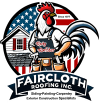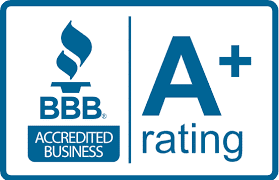
A high-quality roof inspection is crucial for maintaining the integrity of your home or building, as the roof is one of the most essential elements of your property. Regular inspections help identify potential issues early, saving you from expensive repairs and ensuring the safety of your home. Whether you want to maintain your roof, prevent damage, or prepare for a sale, understanding what is included in a high-quality roof inspection will give you peace of mind.
Comprehensive Roof Assessment
A professional roof inspection thoroughly evaluates all aspects of the roof system. The inspector will check the roof’s surface, structural integrity, components, and supporting systems. This process ensures that no issue is overlooked, from minor leaks to major structural weaknesses that could lead to significant damage if left untreated. The first step is usually an exterior assessment, where the inspector examines the roof from the ground using binoculars or a drone to identify any obvious signs of damage or wear. Next, the inspector conducts a closer, hands-on inspection of the roof, ensuring a more detailed examination.
Examination of Roofing Materials
One key element in a high-quality roof inspection is checking the condition of the roofing materials. Different types of roofing materials have varying lifespans, and an inspection will evaluate how well these materials are holding up against the elements. For instance, shingles, tiles, and metal panels all wear differently over time and require different attention.
Inspecting Roofing Materials for Damage and Wear
If your roof is made of asphalt shingles, the inspector will look for cracks, curling, or missing shingles, all of which can lead to leaks. For tile roofs, the inspector will check for broken or displaced tiles that can expose the underlying layers to moisture. The inspector will evaluate any signs of rust, dents, or loose panels on metal roofs.
Flashing and Sealants Check
Flashing is crucial in keeping water from entering your home by sealing areas where the roof meets chimneys, vents, and skylights. The inspection will ensure that the flashing is intact, properly sealed, and securely fastened. Over time, flashing can deteriorate or become damaged, leaving vulnerable points where water can seep in. Sealants around vents, chimneys, and skylights are also assessed. If sealants are cracked or missing, water can infiltrate the roof structure, leading to leaks and water damage.
Inspection of Gutters and Downspouts
An essential part of a roof inspection is assessing the condition of the gutters and downspouts. Gutters help to direct rainwater away from the roof and foundation, preventing water damage to both. During the inspection, the inspector will ensure that gutters are securely attached, free of debris, and free from blockages that could cause overflow. Downspouts should also be checked to ensure that they are functioning correctly. Clogged downspouts can cause water to back up into the gutters, leading to potential leaks or even water damage to the roof structure.
Roof Decking and Structure Review
The roof’s structural integrity is a critical element in a high-quality inspection. The inspector will examine the roof decking and the underlying wood or material that forms the base of the roof system. Any sagging or signs of damage to the decking can indicate a more significant structural issue, such as water infiltration or material deterioration. The roof’s supporting structure, including rafters and trusses, is also evaluated to ensure there are no signs of weakness or damage. Any indication of rot, sagging, or damage to these structural components could suggest a problem that needs immediate attention.
Ventilation and Insulation Check
Proper ventilation and insulation are vital for maintaining the efficiency of the roof and the home as a whole. Poor ventilation can cause heat and moisture buildup in the attic, leading to mold growth, ice dams, or accelerated roof wear. During a roof inspection, the inspector will assess the attic ventilation system, including ridge vents, soffit vents, and any exhaust fans, to ensure that air can flow freely. Insulation is also checked to ensure that the attic is adequately insulated. Inadequate insulation can cause heat loss in winter, making your home less energy efficient year round.
Leak Detection and Water Damage Inspection
A key component of a high-quality roof inspection is leak detection. Water damage can be one of the most costly issues for homeowners, and detecting leaks early on can save significant money on repairs. The inspector will look for signs of water stains, mold, or rot in the attic or ceiling below the roof. They will also assess the roof’s drainage system to ensure that water is being directed away from the house and not causing damage to the structure. The inspector will also look for other signs of water infiltration, such as dark spots, peeling paint, or warped materials. If any of these issues are found, an underlying leak likely needs to be addressed immediately.
Assessment of Roof Age and Remaining Lifespan
Understanding the age of your roof and how much life it has left is an essential part of the roof inspection. Roofs typically last 15 to 50 years, depending on the material used. The inspector will take note of the age of your roof and compare it to the condition of the materials to estimate the remaining lifespan. If your roof is nearing the end of its lifespan or showing significant signs of wear, the inspector may recommend replacement. Knowing your roof’s lifespan can help you plan for future repairs or replacements, preventing unexpected costs.
Identifying Potential Hazards or Safety Risks
A high-quality roof inspection should address potential hazards or safety risks affecting the home or its occupants. The inspector will assess the condition of any roof-mounted equipment, such as satellite dishes, antennas, or solar panels, to ensure that they are securely attached and do not pose a risk to the roof or the home. They will also look for areas where debris, such as branches or leaves, may be obstructing the roof or gutters. In some cases, falling debris can damage the roof, so the inspector will identify any trees or vegetation that need trimming.
Final Report and Recommendations
After completing the roof inspection, the inspector will provide you with a detailed report outlining the findings. The report will typically include photographs of any issues discovered, descriptions of the problems, and recommended solutions. This report is a valuable reference for making informed decisions about roof repairs, maintenance, or replacement. The inspector may also estimate repair costs if any issues are found during the inspection. This information can help you budget for upcoming repairs and avoid unexpected expenses.
Importance of Hiring a Professional for Roof Inspections
While independently conducting a roof inspection might seem tempting, hiring a professional is essential for an accurate assessment. A trained roof inspector knows exactly what to look for and has the expertise to identify problems that an untrained eye may miss. Professionals come equipped with the necessary tools to inspect areas that are hard to reach or dangerous to access, such as steep roofs or high, hard-to-reach places. They can also spot subtle signs of damage, wear, or weakness that may not be immediately visible but could become serious issues over time.
The Role of Weather and Roof Age in Determining Longevity and Maintenance Needs
In addition, a professional roof inspector understands how various weather conditions and age affect roofing materials. They can give you a better sense of how long your roof will likely last. This level of expertise can help you plan your roofing maintenance or replacement needs well in advance, saving you time and money.
The Role of Weather in Roof Inspections
Weather conditions play a significant role in the wear and tear of your roof. The roof inspector will consider the typical weather patterns in your area, such as heavy rain, snow, hail, or high winds, and how these conditions may have affected the roof’s performance. Extreme weather can cause damage that isn’t always immediately visible, such as shingles loosening or small leaks that might not appear later.
The Impact of Extreme Weather on Your Roof and the Importance of Post-Storm Inspections
In areas with frequent hailstorms, your roof may suffer from dents or cracks in the shingles that could compromise its ability to keep out water. Similarly, strong winds can cause shingles or other materials to become loose or displaced. Roof inspections after extreme weather events are essential to check for hidden storm damage and to ensure your roof remains fully functional.
The Importance of Regular Roof Inspections
While some people only think about their roof when they notice a problem, regular roof inspections are key to maintaining its health and longevity. A high-quality inspection should be done at least once a year, but more frequent inspections might be necessary for roofs exposed to extreme weather conditions or other environmental factors. This proactive approach helps catch minor issues before they become more prominent and expensive.
The Importance of Regular Roof Inspections for Long-Term Protection
Regular inspections can also extend the life of your roof by allowing you to make minor repairs and maintain the system. If left unchecked, even small issues like a loose shingle or minor crack can become a more significant problem that could lead to leaks or structural damage. Preventive maintenance and early detection are essential for preserving your roof’s function and ensuring the safety of your home.
The Benefits of Timely Roof Repairs
Once an inspection is complete and any issues are identified, it is crucial to address the repairs in a timely manner. A high-quality roof inspection not only helps you identify problems but also provides a roadmap for repairing or replacing elements of the roof that are beginning to fail. By fixing minor issues promptly, you can avoid the risk of more serious, costly repairs later.
The Importance of Timely Roof Repairs in Preventing Water Damage and Maintaining Curb Appeal
For instance, a small leak in a roof can lead to water damage to the ceiling and walls, mold growth, or even damage to your home’s foundation. A timely repair can prevent such issues and keep your home safe and dry. Additionally, addressing roof problems early can help maintain your home’s aesthetic appeal, as worn shingles or damaged materials can make your roof look unsightly.
Understanding Roof Warranty and Insurance Claims
Another aspect of roof inspections that many homeowners overlook is how they can impact warranty and insurance claims. If your roof is still under warranty, an inspection can help ensure that any existing issues are identified and documented before they worsen, ensuring that the manufacturer’s warranty covers any repairs. If a storm or some other event has damaged your roof, an inspection can also provide the documentation necessary for making an insurance claim. Insurance companies often require a detailed report from a professional roof inspector to assess the damage’s extent and determine whether the repair or replacement is covered under your policy. These reports can be invaluable in helping you get the compensation you need to cover repairs.
The Importance of Regular Roof Inspections for Long-Term Protection
A high-quality roof inspection is an essential part of home maintenance that helps identify potential issues early, prolong the life of your roof, and ensure your home remains safe from water damage. Whether you’re concerned about leaks, wear and tear, or storm damage, an experienced roof inspector can give you the peace of mind to address problems before they become costly or hazardous. With the added benefits of professional expertise, seasonal assessments, and timely repairs, investing in regular roof inspections is one of the best ways to protect your property and ensure your roof’s continued safety and functionality.
Visit our Faircloth Roofing Inc. blog to learn more about our professional roofing solutions.






